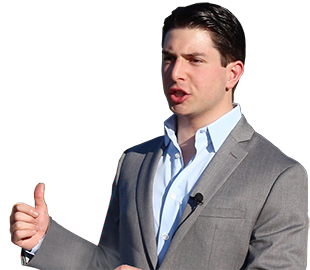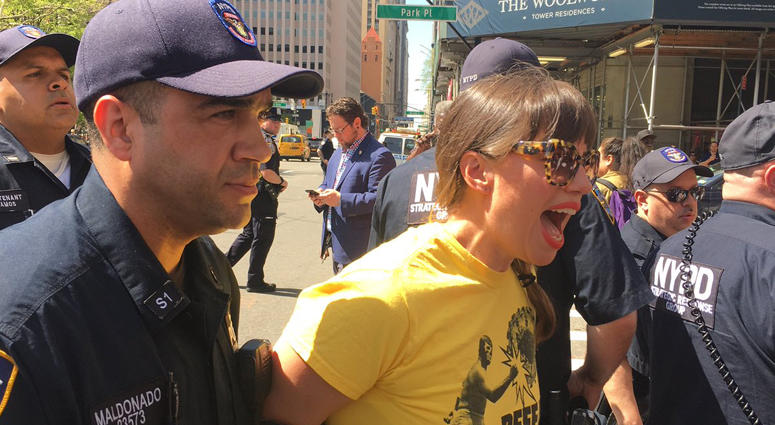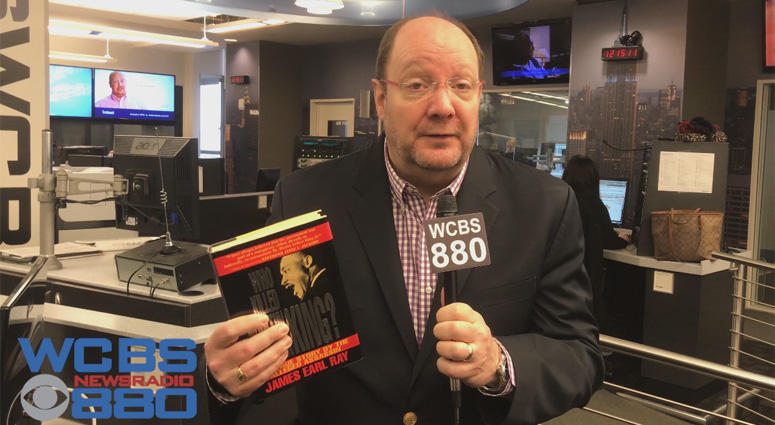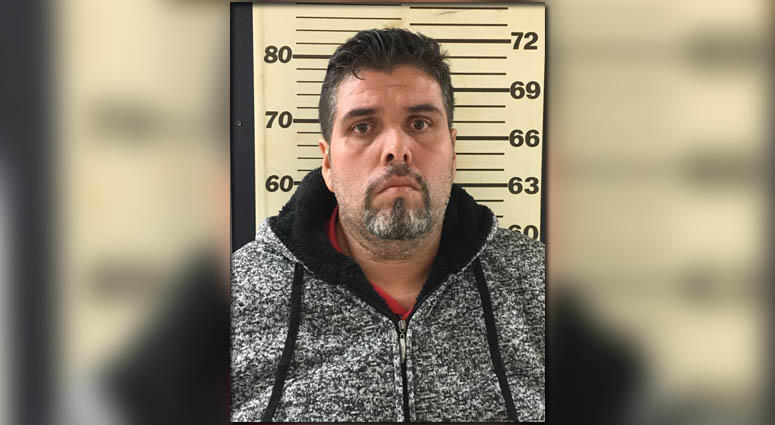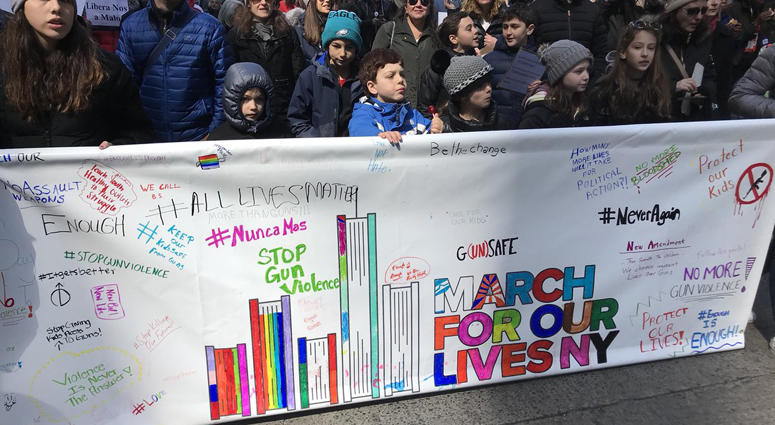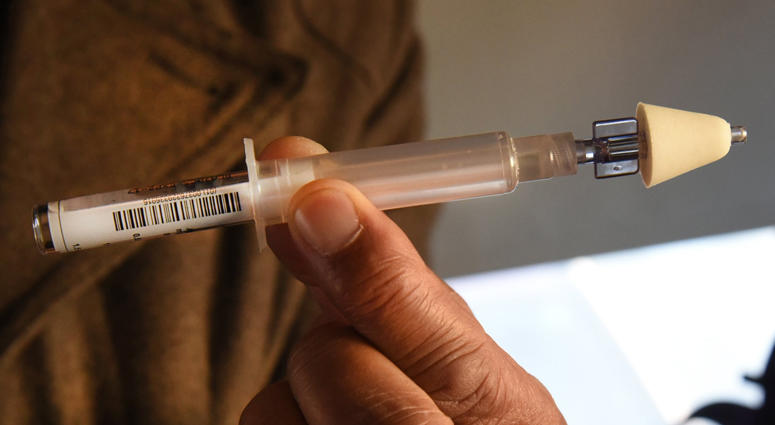
-
City Council Staffers Get Naloxone Training As Protesters Demand Safe Injection Sites
Post Views: 1,488NEW YORK (WCBS 880) — City Council staffers were trained on how to prevent opioid overdose deaths as protesters staged an act of civil disobedience to get Mayor Bill de Blasio to act on so-called safe injection sites.
City Councilwoman Diana Ayala, who represents the South Bronx, organized the training session, hoping staffers would take the information out into the community.
“It’s a very personal subject matter for me as the family member of several individuals who are drug addicted and who have come close to overdosing,” Ayala said.
#savealife NYC Alliance for Positive Change distributes #NARCAN kits and shows city council members how to use them. @wcbs880 pic.twitter.com/0MnCGsvBnR
— Marla Diamond (@MDiamond8) May 2, 2018
Staffers received training and naloxone kits from Reilly Glasgow with the Alliance for Positive Change who has saved over 50 lives using Narcan at the East Side Harm Reduction Center.
“I say this in joking but I’m jaded, this is something that you do all the time, you don’t even think about it. You just hope you’re not too late,” Glasgow said.
About a dozen arrested including City Councilman Steve Levin for blocking lower Broadway demanding sites where opioid users are monitored. @EndOverdoseNY @wcbs880 #opioidcrisis pic.twitter.com/4kTBSBPQj3
— Marla Diamond (@MDiamond8) May 2, 2018
As the training was held on the 16th floor at 250 Broadway, on street level more than a dozen people, including Brooklyn City Councilman Steven Levine, were arrested for sitting in a crosswalk, blocking traffic near City Hall.
They are demanding that de Blasio release the results of a City Hall-commissioned study on so called “safe consumption sites” where users are monitored.
https://twitter.com/mdiamond8/status/991694382284845061?s=21
“Nobody has ever died of an overdose in a single one of them, you know, we can’t really understand what’s complicated about the best public health intervention for saving lives,” said melissa more is with the drug policy alliance.
“The mayor’s basically saying that it’s complicated, he wants to have everything in a row before he releases the report but while he’s doing that people are still dying,” said Hiawatha Collins with the Harm Reduction Coalition. “At the end of the day it’s not about politics, it’s not about where people are going in their position and elevating themselves, it’s about saving lives.”
Canada and Europe have long had monitored injection sites. There are none in the United States.
Neil A. Carousso produced Marla Diamond’s report for WCBS Newsradio 880.
-
A Look Back at Steve Scott’s Interviews With James Earl Ray, The Man Who Pleaded Guilty To Killing Dr. Martin Luther King Jr.
Post Views: 1,716NEW YORK (WCBS 880) — James Earl Ray pleaded guilty and was sentenced to 99 years in prison in the assassination of Dr. Martin Luther King Jr., which happened 50 years ago Wednesday.
But until his death at the age of 70 in 1998, Ray maintained that the guilty plea notwithstanding, he was not the one who killed Dr. King.
WCBS 880’s Steve Scott interviewed Ray several times – including two radio interviews in the prison where Ray was serving his sentence, first in 1992 and again shortly before Ray died in 1998.
Ray was a footnote in the grand scheme of history, Scott noted. But in 1992, Ray published a book, “Who Killed Martin Luther King? The True Story by the Alleged Assassin.” Upon seeing the book, Scott thought Ray might be an interesting person to talk to.
Scott went through Ray’s publisher to get in contact with him, and not long afterward, Ray called him at home.
“I was taking a nap one day, and got a collect call from a maximum security prison in Nashville, Tennessee, and there was James Earl Ray on the other end of the phone,” Scott said. “And I interviewed him, and then I asked him, I said, ‘Hey listen, if I can get myself down to Nashville, would you be willing to sit down in a room with me and record a radio interview face-to-face talking about the King assassination?’”
Scott said Ray responded, “Well, you know, they don’t like me a whole lot,” but said Scott could ask prison authorities. The prison authorities in turn said there were no rules against an interview, so Scott could come down to talk to Ray if he so desired.
So Scott, who was working in Chicago at the time, headed to Nashville and met with Ray at the Riverbend Maximum Security Prison in Nashville in 1992. Ray laughed as Scott played him a clip of CBS News’ Walter Cronkite from the night Dr. King was assassinated.
“Dr. Martin Luther King, the apostle of nonviolence in the civil rights movement, has been shot to death in Memphis, Tennessee. Police have issued an all-points bulletin for a well-dressed young white man seen running from the scene,” Cronkite said in the clip.
Ray said: “Well-dressed? That couldn’t have been me.”
Ray had been a fugitive from a Missouri prison at the time of the King assassination. He had a long criminal record that included armed robbery, burglary, forgery and unauthorized use of a motor vehicle, CBS News reported.
Speaking to Scott, Ray said he was a low-level crook who ran guns over the Canadian and Mexican borders. He said he was duped into being in Memphis when Dr. King was killed on April 4, 1968.
Ray fled the city shortly after the shooting and was captured in London two months afterward, CBS News recalled. He signed a confession with a detailed description of how investigators claimed the crime happened, and went on to plead guilty, CBS News recalled.
CBS News reported the prosecutor in the case, Phil M. Canale Jr., maintained there was no evidence of a conspiracy in the King assassination. Canale did not outline a motive for the killing, nor did he accuse Ray, who was white, of being racist, CBS News reported.
Ray tried to withdraw the guilty plea three days after issuing it even though he had told the judge he understood the plea could not be appealed, CBS News reported. He claimed at the time that he was set up by a shadowy gun dealer he had met in Montreal and whom he knew only as Raoul, and said he himself was changing a tire at the time King was killed, CBS News reported.
Authorities never found a connection between the man identified as Raoul and the slaying, and several courts said there was never evidence of anyone else’s involvement, CBS News reported.
Ray told Scott in the 1992 interview that he was not involved in any way with the King assassination, and he said he pleaded guilty out of concern that his brother and father – the latter also a prison escapee who had been on the lam for more than four decades – might also face charges otherwise.
Scott: “James, I’ll ask you again, did you kill Martin Luther King?”
Ray: “No, I had nothing to do with the shooting of Martin Luther King, and I had no advance knowledge of it. But having said that, I had been, you know, committing criminal offenses. But I wouldn’t have got no 99 years for what I was doing.”
Scott: “You confessed to the King murder.”
Ray: “Yes… I didn’t really confess to it. I entered a guilty plea. There’s a difference between, you know, a confession and a guilty plea.”
Scott: “But why plead guilty to one of the most notorious murders of the 20th century if you didn’t do it?
Ray: “If I didn’t enter a guilty plea, they might charge my brother Jerry Ray for as a conspirator in the Martin Luther King murder.”
Scott: “Who had nothing to do with it?”
Ray: “He was working. They knew he was working at the time. He was working in Chicago at the time, six days a week. They also said they might arrest my father, and my father, he’d escaped from prison in 1925, and he’d been a fugitive ever since. So apparently, the Justice Department found out about it, and they told my attorney, Percy Foreman, and he came and told me that if I didn’t enter a guilty plea, that you know, they might put him back in jail. And so I agreed to enter a guilty plea on those conditions.”
In the interview, Ray suggested that the FBI was behind the King assassination, because then-Director J. Edgar Hoover was terrified of King’s influence over black America.
Ray also reminded Scott that he was a prison escapee himself in 1968, and said, “What better way to stay under the radar than to kill Martin Luther King?”
The U.S. House Select Committee on Assassinations concluded in 1978 that Ray was the man who killed Dr. King. But the committee concluded that a group of racial bigots in St. Louis – with a reported $50,000 bounty on King’s head, might have been involved too, CBS News reported in 1998.
As to whether he believes Ray was King’s assassination, Scott said: “He maintained until the day he died that he didn’t do it. Do I believe him? I’m not a big conspiracy guy. I’m really not. But there is a lot of compelling evidence – and the King family buys into this as well – that points, perhaps, to the fact that James Earl Ray at least did not act alone or didn’t do it at all. But you know what? If you give me 99 years in prison, I’m going to come up with some pretty good stories too. So the bottom line – I just don’t know.”
Neil A. Carousso produced and edited the backstory video with WCBS Newsradio 880 afternoon anchor Steve Scott.
-
Prosecutor: Mexican Drug King, Alleged Underlings Brought Enough Fentanyl Into NYC To Kill Millions
Post Views: 1,283NEW YORK (WCBS 880) — A Mexican drug kingpin and five others were indicted Tuesday in an alleged drug smuggling conspiracy, which authorities said brought enough fentanyl into New York City to kill 10 million people.
In the indictment filed by the New York City Office of the Special Narcotics Prosecutor, Francisco Quiroz-Zamora, 41 – also known as “Gordo” – was charged with operating as a major trafficker, conspiracy, and criminal sale of a controlled substance.
An indictment alleged Quiroz-Zamora, of the Sinaloa Cartel, was the Mexican-based source of a recent large shipments of fentanyl to New York City, and alleged that
A resident of San José del Cabo, Mexico, Quiroz-Zamora allegedly arranged for narcotics to be smuggled from Mexico to Arizona and California on trucks and cars and with drug couriers. He allegedly communicated directly with New York City drug customers, and arranged for members of his trafficking network to conduct drug deals, prosecutors said.
“Kingpin or major trafficker charges carry a life sentence, and that’s important because he had direct dealings from Mexico with a distribution network in New York City and with an undercover officer, and he was responsible for sending to New York City at least 50 pounds of fentanyl, which is charged in the indictment,” New York City Special Prosecutor Bridget Brennan told WCBS 880 Producer Neil A. Carousso. “And you know, fentanyl is so deadly. It’s viewed to be responsible for what will probably turn out to be a record-breaking number of overdose deaths here in New York City in 2017.”
Quiroz-Zamaroa was charged in connection with a bust that netted 44 pounds of fentanyl at the Umbrella Hotel in the Bronx on June 19 of last year, and on Central Park West on Aug. 4 of last year, prosecutors said.
He received about $22,500 from an undercover officer through a Western Union wire transfer, and came to New York City on Nov. 27 of last year to collect more money from the undercover officer, prosecutors said. But agents tracked Quiroz-Zamora’s movements as he took a circuitous route from Texas to Connecticut by plane, down to Delaware, and then to New York on an Amtrak train, prosecutors said.
Quiroz-Zamora was arrested at Penn Station on Nov. 27 and was originally charged in a complaint in Manhattan Criminal Court. He has been in custody since Nov. 29.
Prosecutors said they also busted a stash house on Central Park West at 105th Street, which was receiving the drugs that were being supplied by the defendants.
“What we found there was it was basically a packaging location; that the people inside that location were packaging many, many thousands of little glassines that were being filled with fentanyl or heroin, and some kind of other substance, and then ultimately, the stuff was headed for street distribution, and that was in a lovely Central Park West apartment with many other people living inside, and when you think about it, it’s a very dangerous situation,” Brennan said.
Five other defendants were also charged in the indictment. Prosecutors alleged that Carlos Ramirez, 27, of Colorado, was caught in a bust with an undercover officer; Jesus Perez-Cabral, 20, maintained the Central Park West drug stash along with Johnny Beltrez, 33; David Rodriguez, 32, was seen carrying suspected narcotics into a car outside the Central Park West building; and Richard Rodriguez, 43, was an Uber driver who drove off with the drugs.
Brennan emphasized that her office is cracking down on fentanyl, with overdoses having reached an all-time high of 1,400 deaths in 2017. Seizures also spiked by a factor of more than 12, from 35 pounds in 2016 to 491 in 2017.
Brennan explained that fentanyl is about 50 times more potent than heroin, and is also cheaper to wholesalers – making dealing in it an attractive proposition for drug traffickers.
“Because it’s a synthetic drug, it’s probably a tenth of the cost of heroin. And so, what we are seeing is that the cartel is sending to the U.S. fentanyl in place of heroin sometimes, or it’s sending up a load that mixes fentanyl with heroin. Heroin being much more expensive, the fentanyl allows them to make a whole lot more money, since when the buyers are buying the little packages in the street, they don’t know whether it contains fentanyl or heroin – it could be either – but they’re going to be paying the same price regardless,” Brennan said. “So it really enhances their ability to make a buck.”
Brennan emphasized that millions could have been killed with the amount of fentanyl the drug traffickers brought to the city.
“Millions, I mean, if they were people who were not tolerant of opioids; who hadn’t been using for some time, it would kill many, many people, because the amount of fentanyl which would kill someone who is not accustomed to any kind of opioid really would fit on the tip of your little finger, so think about it – we seized 400-plus pounds; nearly 500 pounds,” she said. “Think of how much damage that would do.”
Brennan added that her office will be going after everyone in the chain of distribution of such dangerous drugs, but will not stop until finding and prosecuting the top suppliers. She emphasized how dangerous – and how disturbingly commonplace – fentanyl has become.
“Fentanyl is now being mixed in with cocaine. It’s being pressed into counterfeit pills. And so anything on our city’s black market could be tainted with this stuff, and it could kill you. So people have to be very, very careful,” she said. “I think prevention messages are very important. I think people need to become educated and recognize that this stuff can’t be played with.”
-
March For Our Lives: In Sound
Post Views: 1,252NEW YORK (WCBS 880) — Hundreds of thousands gathered across the country to demand gun reform.
Listen back to our coverage of the March for Our Lives Rally in Washington, D.C. and here at home:
CBS Correspondent Bill Rehkopf reports from Washington, D.C. where Parkland survivors take the stage and speak out on gun reform:
CBS Correspondent Bill Rehkopf reports on the March For Our Lives in Washington, D.C., where thousands gathered against gun violence:
WCBS Reporter John Metaxas walks alongside crowds of demonstrators who are calling for gun reform at New York City’s March For Our Lives:
WCBS Reporter Ethan Harp speaks with the organizer of New York City’s March For Our Lives:
WCBS Reporter Ethan Harp listens to Governor Cuomo speak on gun reform at New York City’s March For Our Lives:
CBS Correspondent Bill Rehkopf reports from Washington, D.C. where the March For Our Lives has brought massive crowds calling for an end to gun violence:
CBS Correspondent Don Dahler talks gun laws, the possibilty for reform and the place of the Second Amendment in history:
WCBS Reporter Ethan Harp covers New York City’s March For Our Lives where student protesters are calling for gun control following the Parkland massacre:
WCBS Reporter Ethan Harp meets demonstrators at New York City’s March For Our Lives on Saturday, March 24:
CBS Correspondent Bill Rehkopf reports from Washington, D.C. where the protesters are demanding gun control at the March For Our Lives:
WCBS Reporter Ethan Harp speaks to Long Island high schoolers who are rallying for gun reform at New York City’s March For Our Lives on Satuday, March 24th:
Rep. Peter King (R-NY) joins WCBS Newsradio 880 Anchor Cheryl Simone live as “March for Our Lives” protesters gather around the nation to call for gun control measures. Congressman King says it shouldn’t be a Democrat vs. Republican issue or a “gun or anti-gun issue.”
Neil A. Carousso produced WCBS Newsradio 880’s breaking news coverage of the nationwide “March for Our Lives” protest on Saturday, March 24, 2018. All live interviews and content were produced, written and booked by Neil A. Carousso.
-
NYC Steps Up Fight Against Opioid Crisis
Post Views: 1,290NEW YORK (WCBS 880) — This week, Mayor Bill de Blasio announced $22 million more will go to fight opioid overdoses in New York City.
That brings total funding for the HealingNYC program, which was estabished last March, to $60 million.
“We are expanding things that are working and we are also adding some new interventions,” New York City Health and Human Services Deputy Mayor Dr. Herminia Palacio tells WCBS Newsradio 880 Producer Neil A. Carousso. “This is a complex problem and as we learn things we’re adding things to help address it.”
City officials say more New Yorkers die from drug overdoses than suicides, homicides and car crashes combined.
Palacio says HealingNYC aims to reduce opioid overdose deaths 35 percent by 2022.
“We’re starting to see a flattening across the city, from 2015 to 2016 we saw a very rapid increase in the number of opioid deaths by about 50 percent — this increase was largely related to the rapid introduction of fentanyl into the drug supply system and after we initiated HealingNYC we’re very optimistic that we’ve seen a flattening,” Palacio said. “The increase from 2016 to 2017 was only about 5 percent so we still have much, much work to do but we are hopeful that some of our work is really starting to get some traction.”
The next step is more access to naloxone, the life-saving drug that opens receptors in the brain that close when someone uses a drug like heroin. People stop breathing when the brain’s receptors close.
The city Health Department is visiting independent pharmacies throughout the five boroughs over the next month to encourage them to offer naloxone, also known as narcan.
“We have already distributed 100,000 naloxone kits through HealingNYC,” Palacio said. “We have good partnerships with many of the chain pharmacies but in New York City, especially in the boroughs, there’s many independent pharmacies that are still very vibrant parts of the communitiy and through this next initiative the Department of Health is working with approximately 800 independent pharmacies to make sure that they’re aware of the commissioner’s order to make sure that they feel comfortable giving naloxone to people who seek it without a prescription.”
Palacio says the goal of this HealingNYC initiative is to put the life-saving drug in the hands of regular people who can save a life before medics can get to the person.
“So that people can protect themselves, protect their friends, protect their family members. We can’t get you to treatment if you suffered a fatal overdose,” Palacio said. “So this is really about saving a life.”
Individuals seeking support or treatment for themselves or their loved ones can contact NYC Well by calling 1-888-NYC-WELL, texting “WELL” to 65173 or going to nyc.gov/nycwell.
The World
Social Feeds

VIDEO: Told the airline to book us on the next flight out (SPONTANEOUS TRIP!)

VIDEO: The Taylor Swift Effect | WCBS Business Breakfast

VIDEO: Future of NYC | WCBS Business Breakfast

VIDEO: Reasons for New Yorkers to be Optimistic | WCBS Business Breakfast

VIDEO: NYC's AI Chatbot | WCBS Business Breakfast

